News Archive
Filter By
- Aldabra tortoise
- Alpaca
- American bison
- Andean bear
- Aquatic caecilian
- Asian elephant
- Asian small-clawed otter
- Bennett's wallaby
- Black-footed ferret
- California sea lion
- Channel catfish
- Cheetah
- Chicken
- Common raven
- Corals and sea anemones (anthozoa)
- Cow
- Dama gazelle
- Eastern newt
- Eastern red-backed salamander
- Eld's deer
- Fennec fox
- Giant panda
- Goat
- Golden lion tamarin
- Gray seal
- Gray wolf
- Guam kingfisher (sihek)
- Guam rail (ko’ko’)
- Harbor seal
- Hawk-headed parrot
- Lion
- Maned wolf
- Miniature donkey
- Naked mole-rat
- North American porcupine
- Orangutan
- Ossabaw Island hog
- Panamanian golden frog
- Patagonian mara
- Prehensile-tailed porcupine
- Przewalski's horse
- Red panda
- Scimitar-horned oryx
- Screaming hairy armadillo
- Sloth bear
- Tentacled snake
- Tiger
- Two-toed sloth
- (-) Western lowland gorilla
- White-cheeked gibbon
- White-nosed coati
- Whooping crane
Displaying 26 - 39 of 39 articles.
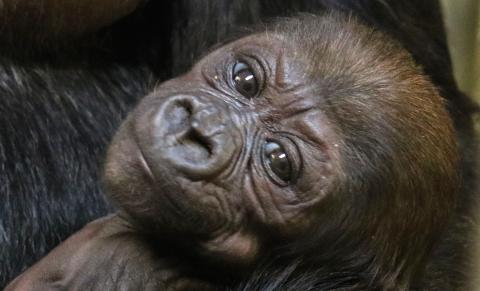
#GorillaStory: Moke Is One Month Old
Western lowland gorilla infant Moke turned one month old on Tuesday! He continues to do well and remains bright and alert.
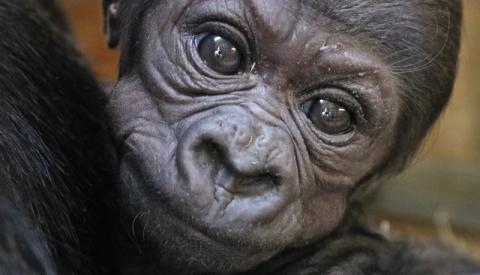
#GorillaStory: A Growing Gorilla
At almost 3 weeks old, western lowland gorilla infant Moke is growing quickly and is starting to take in his surroundings.

#GorillaStory: Moke's on the Move
Moke's on the move! The 12-day-old western lowland gorilla at the Smithsonian’s National Zoo continues to do well.
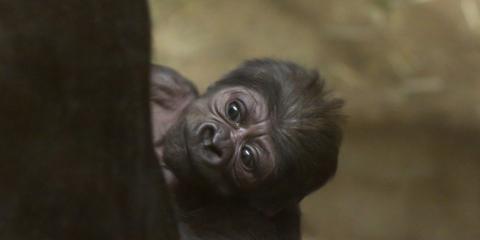
#GorillaStory: Welcome, Moke
On Sunday, April 15, at 6:25 p.m., we welcomed our seventh western lowland gorilla at the Smithsonian’s National Zoo!
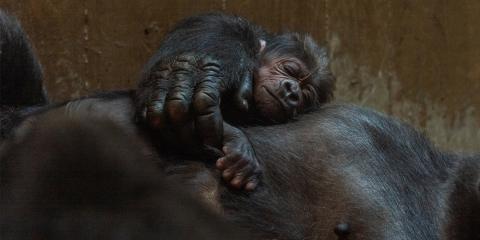
#GorillaStory: Moke and Mom Settle In
On Sunday, April 15, western lowland gorilla Calaya gave birth! Calaya and her newborn son, Moke, are resting and bonding in the Great Ape House.
Western Lowland Gorilla Born at the Smithsonian’s National Zoo and Conservation Biology Institute
For the first time in nine years, primate staff at the Smithsonian’s National Zoo are celebrating the birth of a male western lowland gorilla.

#GorillaStory: Behavior Watch
The Great Ape House is awaiting the arrival of its newest resident! Keepers have been watching western lowland gorilla Calaya’s sleep patterns, appetite and socialization, as any changes in her behavior may signal that birth is near.
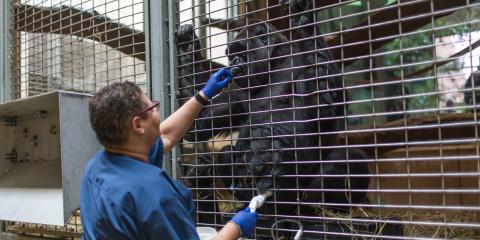
#GorillaStory: What to Expect
As western lowland gorilla Calaya nears the end of her pregnancy, keepers at the Great Ape House are keeping a close watch on her, monitoring for any indication that she is in labor. Calaya is due to give birth anytime between now and early May.
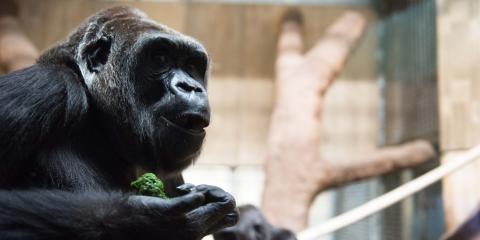
#GorillaStory: Nutrition
Primate keeper Melba Brown discusses nutrition for pregnant western lowland gorilla, Calaya, and the significant role of milk for her infant.
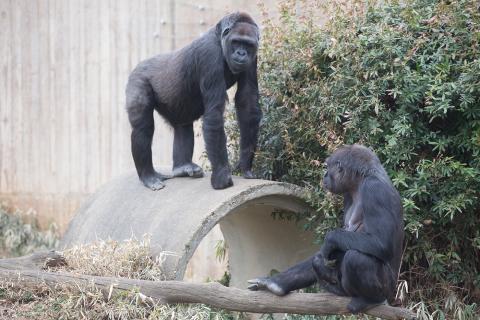
#GorillaStory: Foster Training with Mandara
Expectant animal mothers at the Smithsonian’s National Zoo often undergo maternal training to ensure that they are successful parents to their new offspring. In addition to training the mothers-to-be, animal keepers frequently train a “foster mom” in the event that a mother is unwilling or unable to...
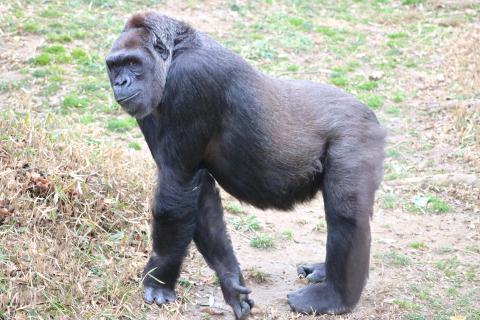
#GorillaStory: Two Troops
Family dynamics and relationships can be complicated, even among gorillas. The Smithsonian’s National Zoo’s Great Ape House is home to two groups—called troops—of western lowland gorillas. When deciding to introduce gorillas into a troop, animal care staff carefully consider each individual’s age...
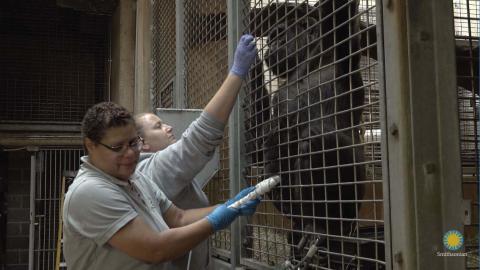
#GorillaStory: Ultrasound Training with Calaya
Primate keeper Melba Brown trained the Zoo’s pregnant western lowland gorilla, Calaya, to participate in ultrasounds.
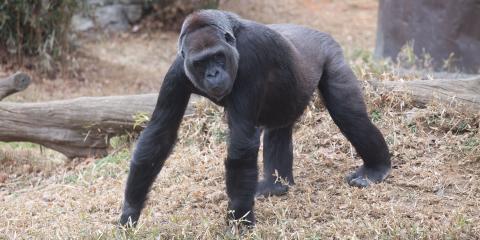
#GorillaStory: Maternal Training with Calaya
When it comes to caring for babies at the Smithsonian’s National Zoo, it takes a village. For western lowland gorilla Calaya, her village of support is the great ape animal care team and her primary keeper, Melba Brown. Every day, keepers use positive reinforcement training to teach the gorillas...

#GorillaStory: Nest Building
Everyone likes to have a cozy place to sleep. Western lowland gorillas, however, rarely sleep in the same bed twice. With the exception of young infants, each gorilla in a troop constructs his or her own nest. Gorillas forage where resources are available, so they are often on the move, leaving...
